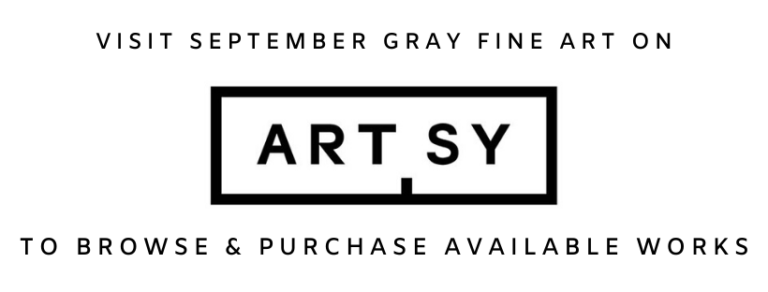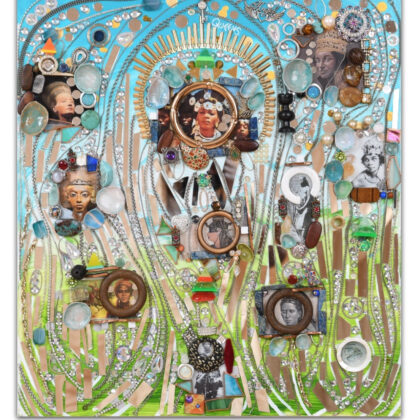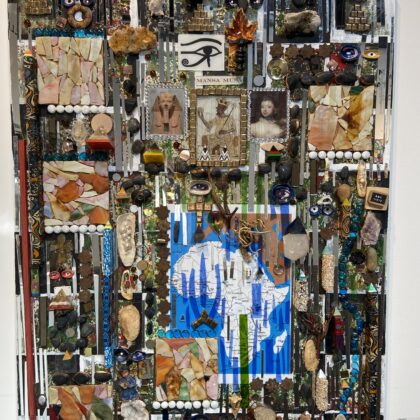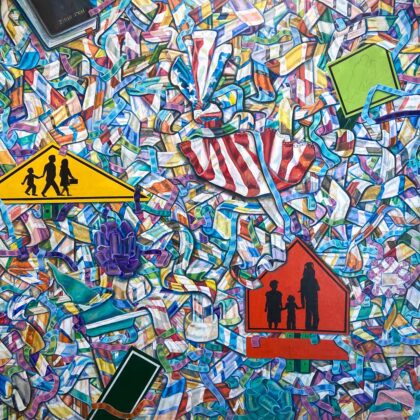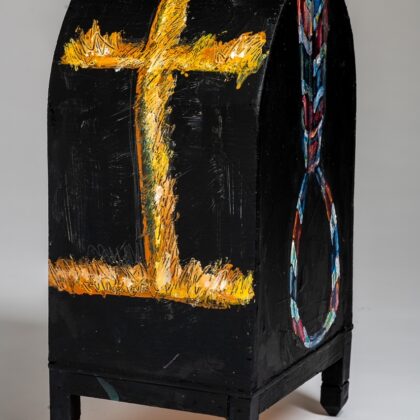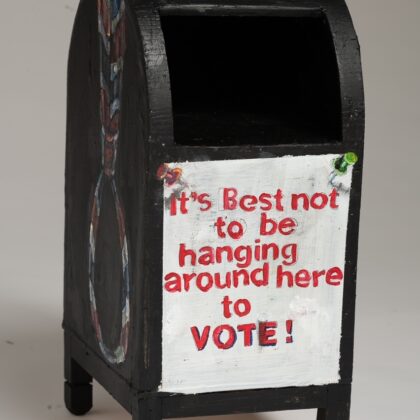RITUALS AND REMEMBRANCE…
WE WILL UNDERSTAND IT
BETTER BY AND BY
FEBRUARY 18 — APRIL 8, 2022
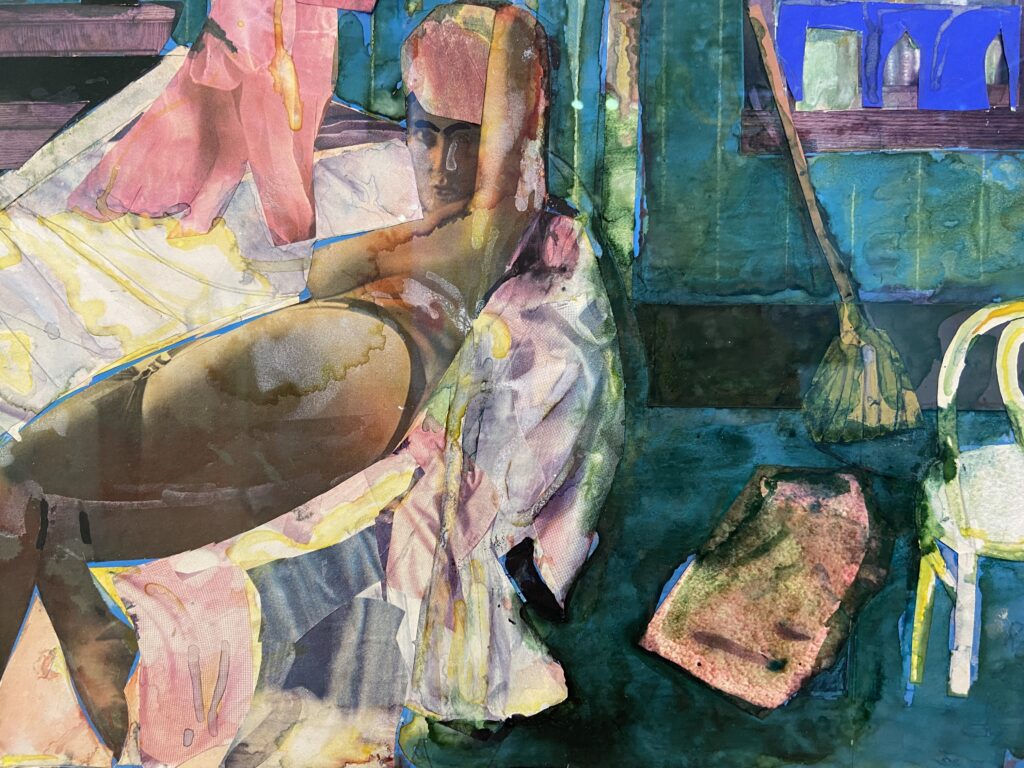
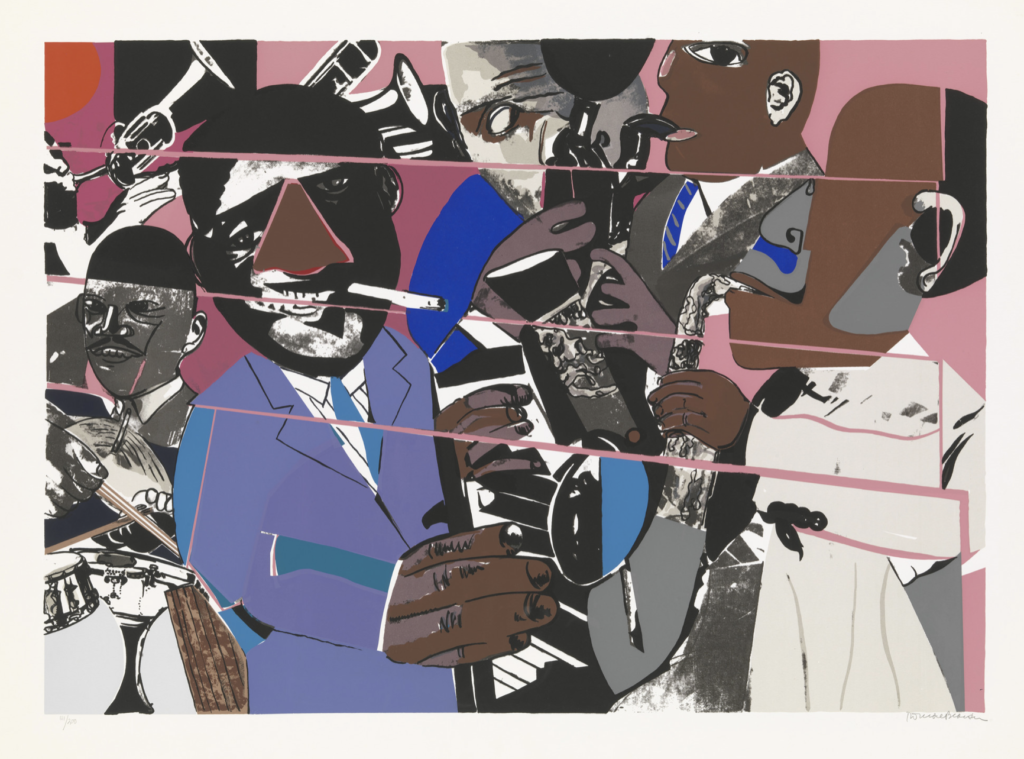
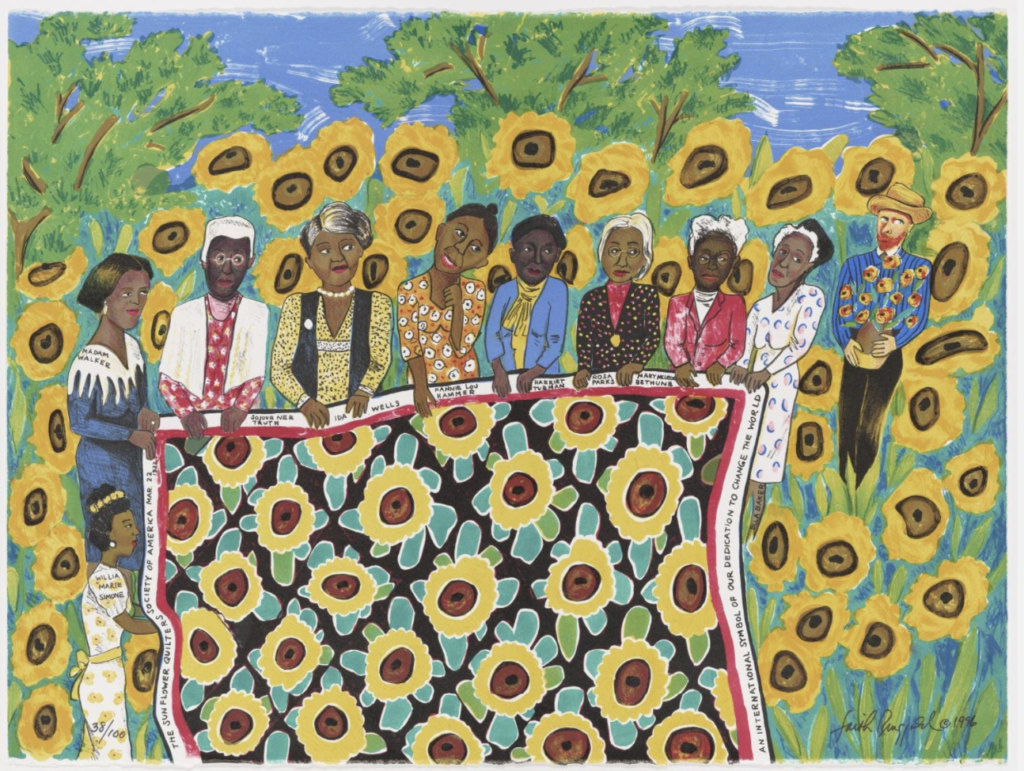
ROMARE BEARDEN, LILLIAN BLADES, KEVIN COLE,
FAITH RINGGOLD
ATLANTA, (February 18, 2022) The group exhibition features artwork by Romare Bearden, Lilian Blades, Kevin Cole, and Faith Ringgold, evoking themes of ritual and memory. As we celebrate Black History Month, we commemorate the memories, traditions, and histories of those who came before us. The exhibition’s title draws inspiration from the hymn “We’ll understand it better by and by,” written by Charles Albert Tindley, echoing the injustices and inequalities of the past and present and looking to a better, brighter tomorrow. The show pays homage to our shared histories, illustrating the corruption and cruelties we still face, the progress made, and changes still yet to come. September Gray Fine Art Gallery hosted a closing reception on Friday, April 8, 2022, which featured an artist talk with and artist talk with Lillian Blades and Kevin Cole.
Romare Bearden’s poignant Profile encompasses memories of Mecklenburg County and Pittsburgh during the 1920’s, a decade in which much of his time actually was spent in Harlem. Recollections of sites and experiences in all three places, one agrarian, one working class one emergent bourgeoisie, had long before becoming essential fodder to Bearden’s artistic enterprise. Less frequently acknowledged is the at several places associated with the history of the blues and jazz were also important to Bearden’s visual world although he is not known ever to have visited them – Chicago, Kansas City, New Orleans, and the Louisiana bayou.
Bearden’s student interest in cartooning led to professional work. Several monthly issues of The Crisis from April 1934 through 1936 included his images. And from September 1935 through May 1937, his drawings were published weekly on the editorial page of Baltimore’s Afro-American, a major mass-circulation weekly that vied for importance with the Chicago Defender, the New York Amsterdam News, and the Pittsburgh Courier. These trenchant visuals commented on numerous demanding subjects: The Italian-Ethiopian conflict; the Scottsboro boy’s Trial; the Ku Klux Klan; anti lynching legislation; Depression-era Soup lines and inequitable Job opportunities; relationships between student and labor protesters; the rise of Adolf Hitler; imminent war and memories of how few gains were made by the colored boys( Bearden’s Language) who fought for democracy and their county tin the last Great War; the relationship of war and human greed; the Methodist Episcopal church conference and the church support for segregation; colored athletes and the 1936 Olympics; Supreme Court Decisions as a barrier to racial equality; and the defection of Colored voters from the Republican party with the consequent support for Franklin Delano Roosevelt. It is both astonishing and heartbreaking to realize how many of Bearden’s concerns remain timely today.
Lillian Blades was born in Nassau, Bahamas, in 1973 and currently resides in Atlanta, GA. She holds a BFA in Painting from the Savannah College of Art and Design and an MFA in Painting from Georgia State University. In addition, Lillian has studied at the Skowhegan School of Painting and Sculpture in Maine and Caversham in KwaZulu Natal, South Africa.
Lillian’s works are predominantly mixed media assemblages on wooden panels or wires together to form moving tapestries. They are made with an assortment of materials, both found and constructed by her in the studio. Her childhood home of Bahamas, ancestral background of West Africa, and her late mother, who was a seamstress, influence her art. These influences appear through the use of her color palette and objects that evoke memory and history.
As a public artist, she enjoys collaborating with other artists and groups on large-scale assemblages such as The East Atlanta Library. Lillian’s work has appeared in solo and group exhibitions throughout various galleries in the United States and the Bahamas, Trinidad, Germany, and South Africa.
Her public commissions include Hartsfield Jackson Atlanta International Airport, Jean Childs Young Middle School, State Farm Arena, Georgia Power, and several corporate offices in Midtown Atlanta. Her artwork is also in the collections of the Birmingham Museum of Art, Clark Atlanta Museum, and The National Art Gallery of the Bahamas.
Artist Statement
My artistic visual language incorporates symbolic objects and imagery that combine to create emotional landscapes of colors, textures, and patterns that resonate within me.
Mirrors and other reflective materials bring the viewer into the same picture plane. I allow the viewer to have spurts of interaction with their reflections, and their experience is fringed with the duality of the emotionally charged mosaic-like painting. The assemblage format of collected and curated bits and pieces is like a quilt or family heirloom. I want to evoke that same comforting feeling visually for myself and for others.
In public spaces, my complex assemblages engage the viewer at their comfort level. They may breeze past, enjoying a rush of colorful design, or slow down to ruminate on the details. I hope the experience is positive and uplifting as viewers’ project individual associations of heritage and memory.
“When I graduated from high school my grandfather took me to a tree and showed me where African American were lynched by their by their neckties on their way to vote. This left a profound statement in my mind.
For the last ten years my work has explored the relationship between sight, sound and color in respect to music. Music such as jazz, R&B, Hip-Hop, Blues and gospel music all which are prevalent in the African American community.
It’s funny how those things that are etched into our psyche while young have a way of working themselves out as we age. Throughout my artistic journey, the tie has been more than just a recurring motif and icon. It has been foundational for the work that I have produced, and who I am as artist, husband, educator, father and friend. Transformed from a symbol of powerlessness to a symbol of strength, it represents my beliefs in change, my sense of a more connected community, and even my faith in a higher power.
Additionally, my artistic journey has paralleled my personal sojourn to become wiser, find truth and search for pure expression.”
—Kevin Cole
Faith Ringgold, née Faith Jones is an American artist and author who became famous for innovative quilted narrations that communicate her political beliefs. In the mid-1950s, Jones started teaching art in New York public schools, which she continued until the 1970s. Artist, author, educator, and organizer Faith Ringgold is one of the most influential cultural figures of her generation, with a career linking the multi-disciplinary practices of the Harlem Renaissance to the political art of young Black artists working today. For sixty years, Ringgold has drawn from both personal autobiography and collective histories to both document her life as an artist and mother and to amplify the struggles for social justice and equity. From creating some of the most indelible artworks of the civil rights era to challenging accepted hierarchies of art versus craft through her experimental story quilts, Faith Ringgold has produced a body of work that bears witness to the complexity of the American experience.
